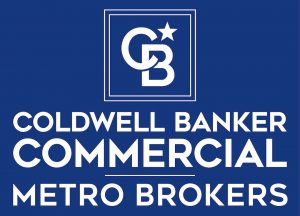Understanding Value-Add Properties: A Simple Guide for Investors
Investing in real estate can be rewarding, but it can also be a bit tricky. One type of investment that many people talk about is value-add properties. These properties offer a chance for higher profits, but they also come with more work and risk. In this guide, I will explain the basics of value-add properties in a way that’s easy to understand.
What Are Value-Add Properties?
Value-add properties are real estate that aren’t performing as well as they could be. However, with some improvements, they can become much more valuable. These improvements can be physical, like fixing up the building, or they can be operational, like finding better tenants.
Investors often like value-add properties because they offer the potential for bigger profits. But remember, these properties require more effort and come with higher risks. It’s important to know what you’re getting into.
Key Features of Value-Add Properties
- Underperforming Properties:
- Value-add properties usually aren’t doing well when you buy them. They might need repairs, have empty spaces, or be poorly managed. Understanding why the property is underperforming is the first step in deciding how to improve it.
- Potential for Upgrades:
- These properties often need upgrades. This might mean renovating the building, updating the interiors, or adding new features. These improvements can make the property more attractive to tenants, leading to higher rents and fewer vacancies.
- Better Management:
- Sometimes, the problem isn’t the building but how it’s managed. You might be able to improve the property’s value by cutting costs, finding better tenants, or negotiating better lease terms. Better management can lead to more income from the property.
- Higher Risk, Higher Reward:
- Value-add properties come with more risk than properties that are already performing well. But if you successfully make the improvements, the rewards can be much greater. This could mean a significant increase in both the property’s value and your income from it.
How to Succeed with Value-Add Properties
- Do Your Research:
- Before you invest in a value-add property, you need to do your research. Look into the local market, check out the property’s financials, and figure out what improvements are needed. The more you know, the better prepared you’ll be to make a smart investment.
- Create a Plan:
- Once you’ve done your research, it’s time to create a plan. This plan should outline what improvements you’ll make, how much they’ll cost, and how long they’ll take. Also, think about what could go wrong and how you’ll deal with it.
- Find the Right Financing:
- Financing a value-add property can be tricky because lenders might see it as a higher risk. You’ll need to find the right financing option that fits your needs. This could be a conventional loan, a bridge loan, or even partnering with other investors.
- Execute and Monitor:
- Once your plan is in place and you have financing, it’s time to put your plan into action. Keep a close eye on the project to make sure everything stays on track. Be ready to make changes if things don’t go as planned.
- Plan Your Exit Strategy:
- Finally, it’s important to have an exit strategy in mind. Whether you plan to sell the property after making improvements or keep it for long-term income, knowing your end goal will help guide your decisions throughout the process.
Why Consider Value-Add Properties?
Value-add properties can be a good option for investors who are willing to take on more risk in exchange for the chance of higher returns. They offer a unique opportunity to increase a property’s value through smart improvements. However, it’s important to approach these investments carefully. Without the right knowledge and planning, value-add properties can become more trouble than they’re worth.
If you’re new to this type of investment, it might be a good idea to work with a seasoned professional or consider investing in a value-add fund. This can help you learn the ropes and reduce the risks involved.
Conclusion
In conclusion, understanding the basics of value-add properties is key if you’re considering this type of investment. By focusing on properties with potential, creating a clear plan, and executing that plan effectively, you can unlock significant value and achieve impressive returns. However, because these investments come with higher risks, doing your research, knowing the market, and careful planning are crucial.
Do you have any specific questions about value-add properties, or would you like more details on any part of this strategy? Here are ten questions you might consider asking next:
- What are the most common mistakes in value-add property investments?
- How do I assess the potential of a value-add property?
- What are the best markets for value-add opportunities currently?
- How do operational improvements differ from physical renovations in value-add strategies?
- What financing options are best for value-add investments?
- How do I calculate the return on a value-add property?
- What role does property management play in a value-add investment?
- How can I reduce the risks associated with value-add properties?
- What are the tax benefits of value-add property investments?
- How long should I hold a value-add property to maximize returns?

 Facebook
Facebook
 X
X
 Pinterest
Pinterest
 Copy Link
Copy Link

